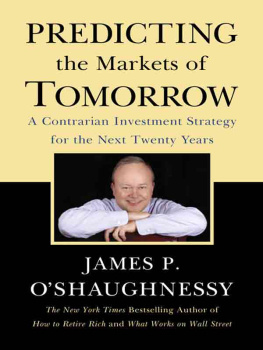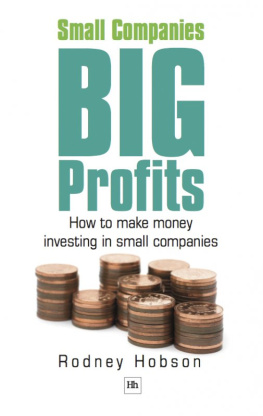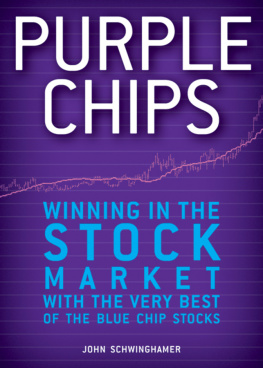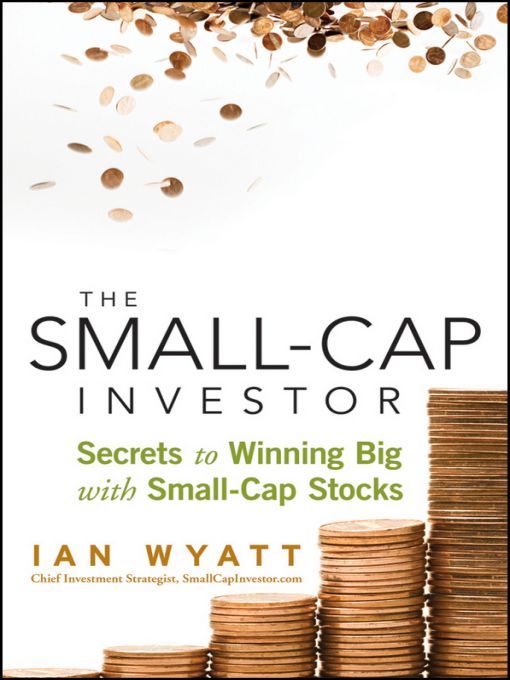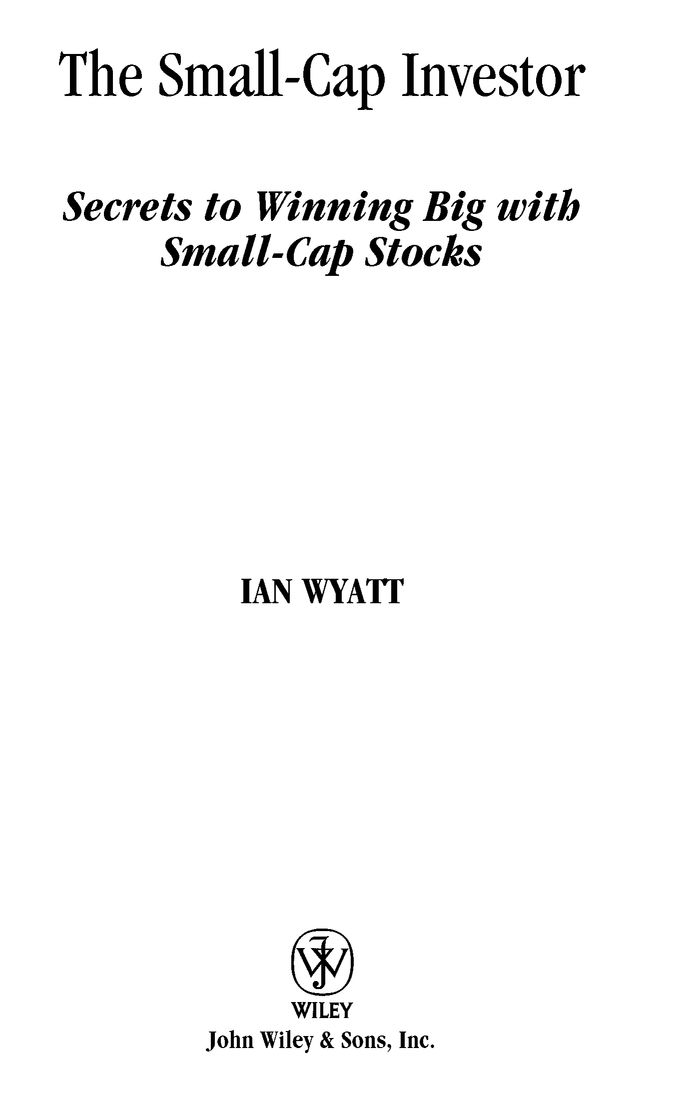Table of Contents
To Gram and Grandpa Cheney
who got me started with investing
Acknowledgments
I want to thank the many people who contributed to this book in varying ways.
Thanks to my wonderfully supportive and loving wife, Carrie. Your constant feedback, critiques, and thorough editing have made this book something I am very proud of. Thank you for investing the time in this project, working with me during the evenings and weekends. And thank you for your endless support in my professional and personal life.
Thanks to my loving parents, Bruce and Carol, for supporting my interest in the stock market from an early age, helping me find great learning experiences, and encouraging me to start my own business, taking the path less taken.
Thanks to my sister, Jocelyn, and brother, Reid, for loaning me money to invest in the stock market, my first childhood experience with leverage.
Thanks to my collaborator on this project, Michael Thomsett. I enjoyed working with you to put together a great bookhopefully the first of many.
I also want to thank all of my colleagues at Business Financial Publishing who contributed to this project. To my editor, Bob Bogda, Ive learned much from you over the years. To my talented researchers, Benson George and Jason Cimpl, thank you for setting aside your regular jobs to help find the examples that made this book what it is. And thank you to everyone else at my company who allowed me the time to write this book.
IAN WYATT
INTRODUCTION
The Story of a Small-Cap Investor
There is nothing quite as exciting, intoxicating, or rewarding as investing in promising small-cap stocksthose on the path to growth, profits, and big returns for their shareholders. I love investing in small-cap stocks, those publicly traded companies with market capitalizations of less than $2 billion. My favorite and best-performing investments of all time have tended to be the smallest of the small caps, with market capitalization of less than $500 million; these are often called micro caps. I like to discover the unknown stock with great promise and strong fundamentals when nobody else has recognized the potential. And I try to buy growth at value prices.
Many great small-cap stocks go unnoticed by other investors, not only by individuals, but by big institutional investors as well. This book tells you why these stocks are usually overlooked, and shows you how to find the small companies with significant potential for growth and profits. It also shows you how to evaluate these stocks from both a fundamental and a technical perspective so you can determine whether you should buy the stock to begin with, and also when you should buy and sell. Small caps are different than mid- or large-cap stocks in many ways, and can yield significant gains that are impossible to find in larger stocks. Unfortunately, until now there hasnt been a lot of information about how to successfully invest in these smaller, less known companies. In this book, I share with you my simple system for successfully finding great small-cap stocks for maximum profits.
Contrary to what most people think, small caps as an asset class are relatively safe investments. Over the long term, small caps have outperformed every other class of investments, as Ill show you in a later chapter. And the fact that these investments outperform over the long term makes them a no-brainer for every portfolio. For investors seeking big long-term gains, small caps should be thought of as the home run hitter, the investments that can really help improve overall portfolio returns from average to extraordinary. While the volatility of an individual small-cap stock can be significant, a diversified portfolio of individual stocks, index funds, or mutual funds is recommended for most investors. I believe small caps have a place in every equity investment portfolio, regardless of your investing time horizon.
Throughout this book, I share my investment process and the systems that are involved, and clearly outline the easy steps you need to take to begin uncovering great small-cap gems today. If you seek growth in your portfolio, small caps offer an effective solution. This book shows you how to not only find the winners, but also how to avoid the losers. This is particularly important for investors who experienced significant losses in the stock market crash of 2008 and are looking to aggressively grow their investment portfolio to make up for early losses.
Many investors are skeptical of investment advice from someone who isnt a hedge fund or mutual fund manager. But after the recent collapse of many hedge funds, and under-performance of most mutual funds, being a money manager doesnt hold the same prestige that it once did. I often get asked, If youre such a great investor, why are you selling your information, strategies, and stock picks to individual investors like me? This is a valid question.
I have never worked for anyone else, but instead have always chosen to do my own thing and taken the path less traveled. This started with my own freelance web design at age 15; the money I earned was invested in the stock market. I started the web site BizFN.com in 1998 while in high school and built it into a leading investment site with content from dozens of investment experts and financial advisors. I attended college for a year before moving on to pursue my entrepreneurial interests. In 2001, I started my Internet publishing company, Business Financial Publishing, which grew to more than $7 million in annual sales within six years, placing my company at number 185 on the Inc. Magazine 2008 Inc. 500 list of the fastest-growing private companies in the United States. Prominent accounting firm Deloitte and Touche also selected my company as one of its fastest-growth companies, rating Business Financial Publishing number 66 on its Fast 500 list of high growth private companies in 2008. Today more than one million individual investors receive my updates and insights into the stock market every day through my various investment publications and services including SmallCapInvestor.com.
Ive never been a suit-and-tie type of guy and never wanted to have a boss. While my job may not be as prestigious as that of an investment banker or mutual fund manager, it is perfect for me, giving me complete flexibility to spend my time as I choose. Being the boss and owner of my company also allows me to personally invest in great small-cap stocks, educating individual investors, and sharing my top stock picks with others. In a big investment firm, I simply wouldnt have the same flexibility. Running my own company satisfies my passion for small-cap stocks and my desire to share my investing strategies that have worked so well for me. I enjoy helping investors successfully buy great companies at bargain prices before Wall Street and Main Street catch on to these success stories.
Let me tell you how I got started investing at a young age. In 1982, when I was two years old, my grandfather gave each of his grandchildren $1,000 of Exxon stock and signed each of us up for the companys dividend reinvestment plan. Within nine years the shares had appreciated more than 500 percent to $7.50 per share from a split-adjusted $1.20. By age 11, I was sitting on an investment portfolio worth more than $10,000, all in Exxon stock, thanks to my generous grandparents.




